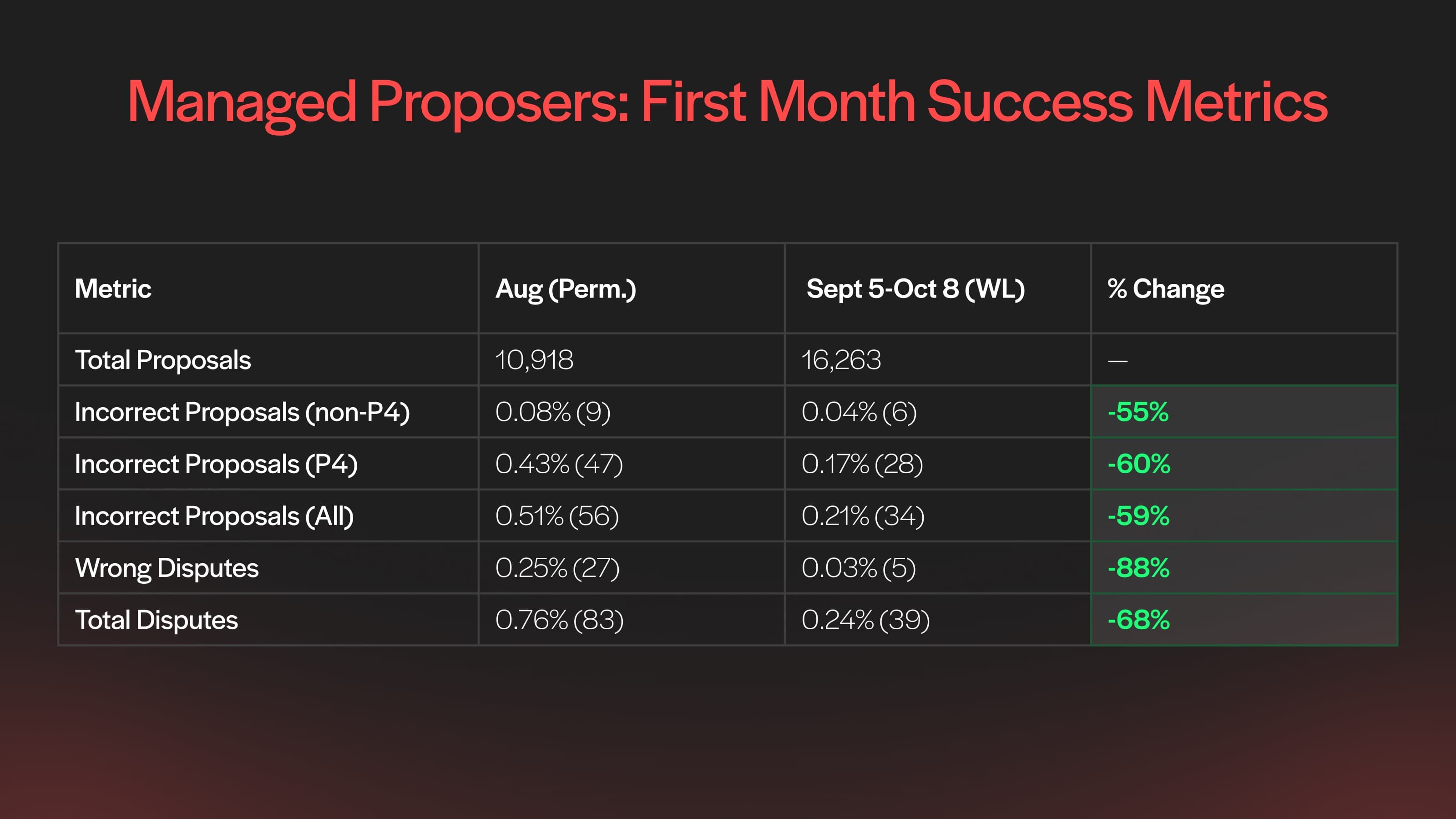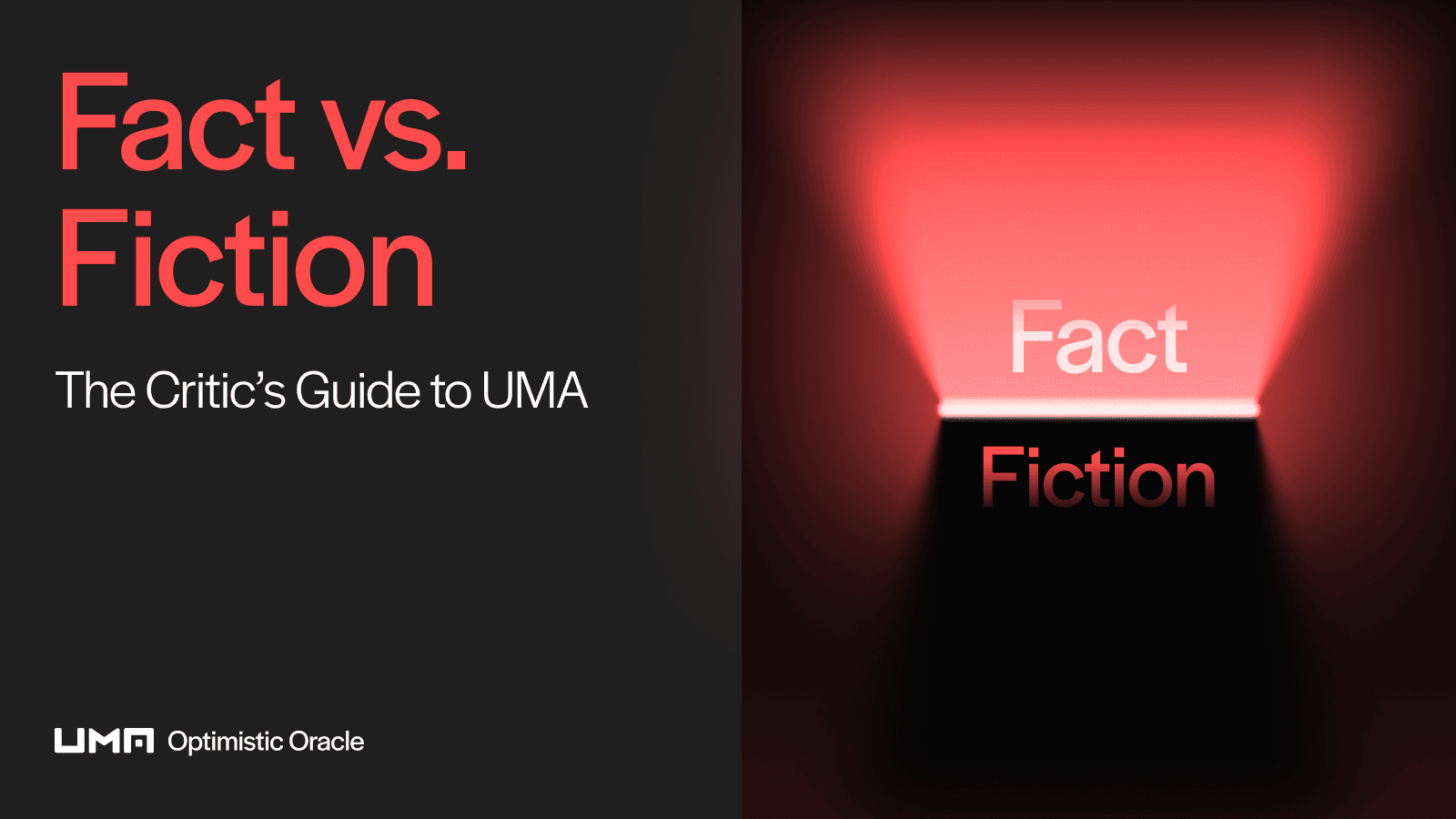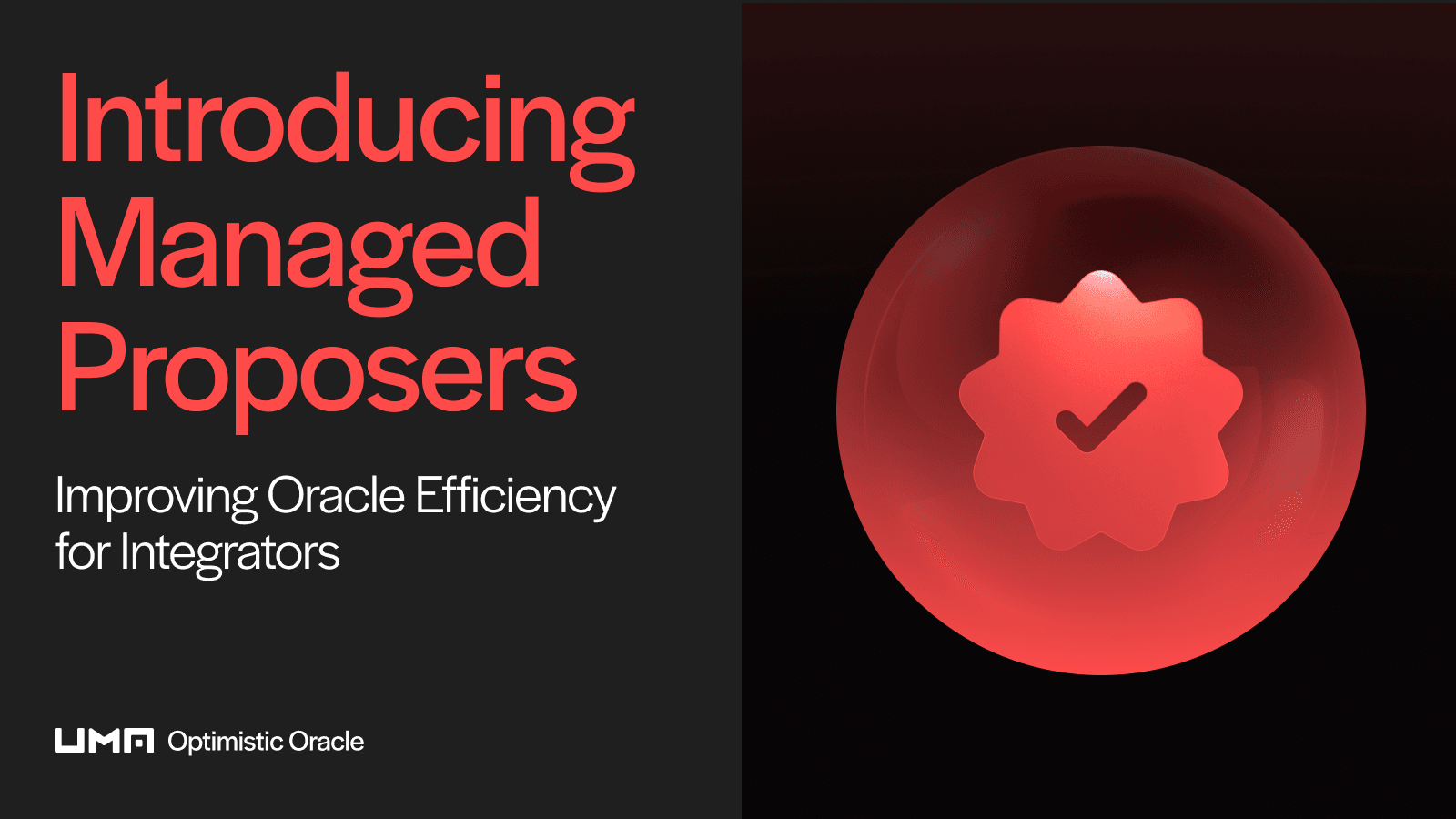TL;DR
In September, UMA introduced a contract to allow Polymarket to manage proposers via a per-market whitelist.
Polymarket decides which markets use a whitelist; UMA enforces the logic and curates eligibility criteria based on historic proposer accuracy.
In October, we expanded the whitelist in order to respond faster across all market types. As of right now, in November, the total number of whitelisted addresses is 177.
Since enforcement began on Sept 5, incorrect proposals fell 59% and total disputes fell 68% (first-month comparison).
Snapshots to update the whitelist are taken on the 2nd of every month using a rolling 6-month performance window.
Quick Refresher: Proposing in UMA’s Optimistic Oracle
When a Polymarket market is ready to resolve, a proposer submits an answer to UMA’s Optimistic Oracle (OO). If no one disputes during the challenge period, the answer is accepted onchain. If disputed, it escalates to UMA’s tokenholder-governed Data Verification Mechanism (DVM). Disputes remain permissionless, anyone can challenge a bad proposal.
What Changed with ManagedOptimisticOracleV2
Polymarket can specify which addresses are allowed to propose for a given market. This reduces low-quality or premature proposals while preserving UMA’s open, decentralized dispute process.
Takeaways:
Per-market control: Polymarket controls whether a given market uses a whitelist.
Open backstop: Disputes are still permissionless; the DVM remains the final arbiter.
Full transparency: The active whitelist is published in UMA’s UI.
Why We Introduced a Whitelist
As Polymarket scaled, so did the volume of proposals. Even a relatively small small share of incorrect or premature proposals created unnecessary disputes, delay, and operational overhead. A performance-based whitelist relies on experienced proposers, who are less likely to make mistakes that end up burdening voters.
First Month Success Metrics
Baseline (Aug, permissionless) → First month (Sept 5–Oct 8, whitelisted)

Takeaway: Fewer bad proposals and far fewer unnecessary disputes. Faster, cleaner resolution without compromising decentralization.
Expanding the Whitelist
To respond faster across all market types, we broadened eligibility for the proposer whitelist:
Requirement: ≥ 5 proposals with ≥ 95% accuracy
Impact: In the initial September rollout 37 addresses were whitelisted. In October, the total was 156. Now, in November, there are 177.
This better captures consistent, accurate proposers who may have lower overall volume but strong recent performance, helping us improve coverage and speed.
How Eligibility Works
Rolling window: Prior 6 months of proposer history.
Threshold: At least 5 proposals at ≥95% accuracy.
Cadence: We take a snapshot of proposers on the 2nd of every month. Updates are made within a week after the snapshot.
Addresses that meet the threshold are added.
Addresses that fall below are removed.
Recent snapshots: Oct 2 and Nov 2. Next snapshot: Dec 2.
Who Decides When a Whitelist Applies?
Polymarket controls whether a given market uses a proposer whitelist. UMA enforces the whitelist mechanism and curates eligibility criteria. You can view the current whitelist in UMA’s UI at any time.
How to Get On (and Stay On) the Whitelist
Propose accurately on OOV2 requests that are not whitelisted. Focus on clarity of resolution criteria and reliable sources.
Build recent history. Meet the 5-proposal / 95% accuracy bar within the rolling 6-month window.
Stay active. Continued participation helps maintain eligibility as snapshots roll forward. All proposers must maintain the accuracy threshold to stay on the whitelist.
Closing Thoughts
The proposer whitelist is a pragmatic upgrade: it reduces noise, speeds up resolutions, and keeps disputes open to everyone. With monthly, data-driven updates and transparent criteria, we’re scaling truth verification while preserving the decentralization that makes UMA resilient.
Thanks to the community for making this migration a success.



